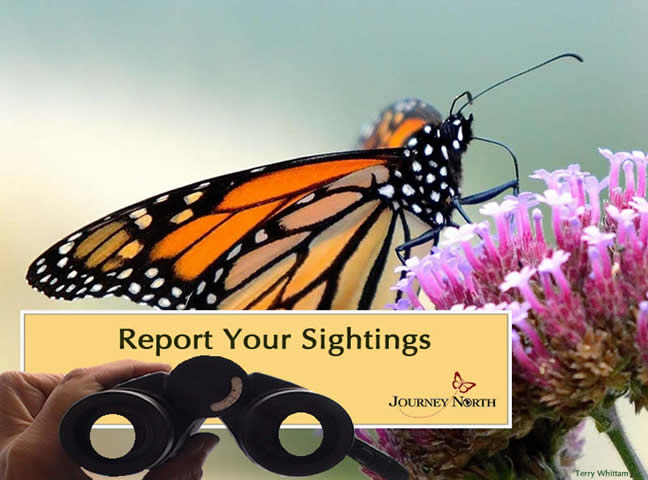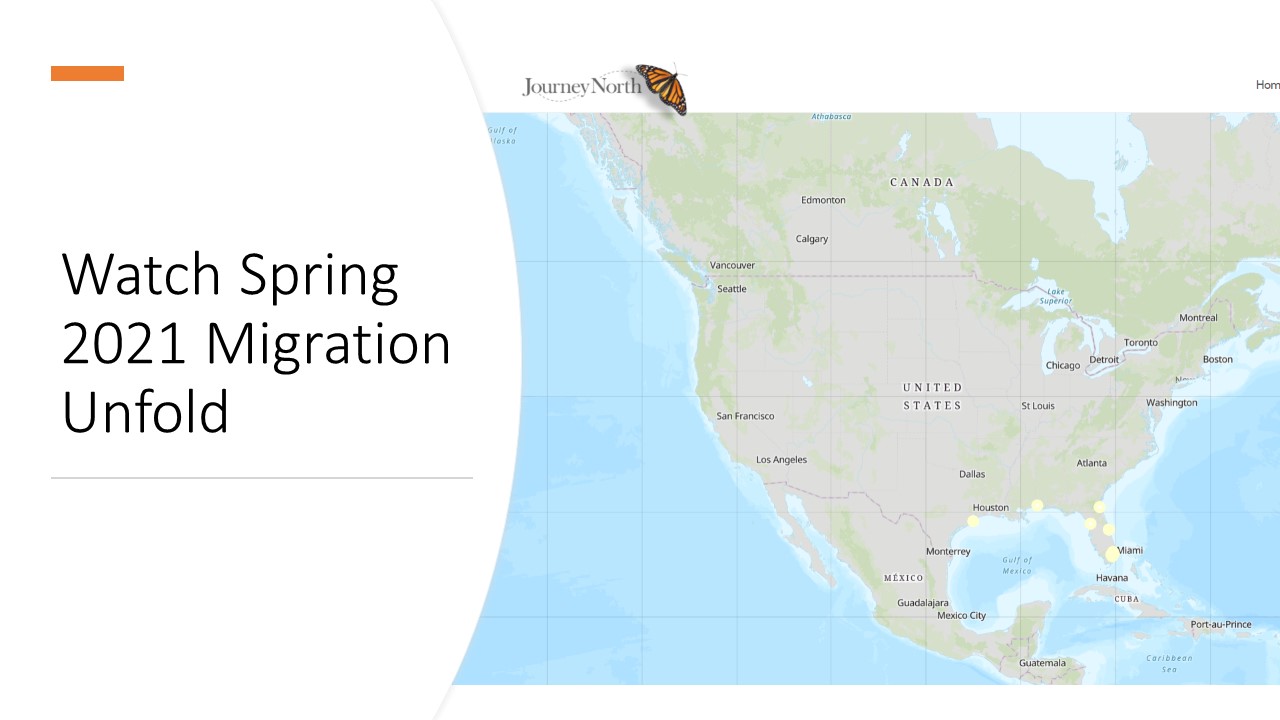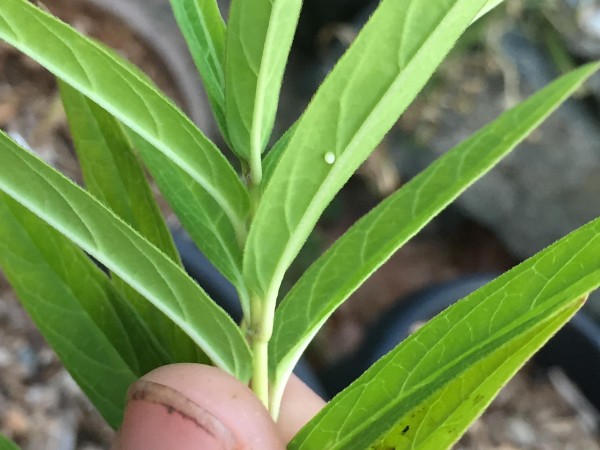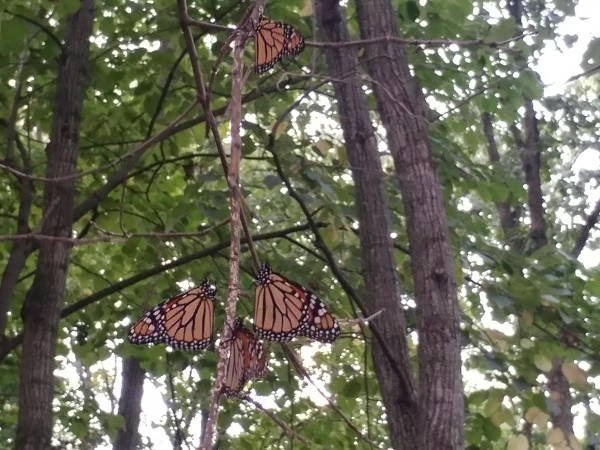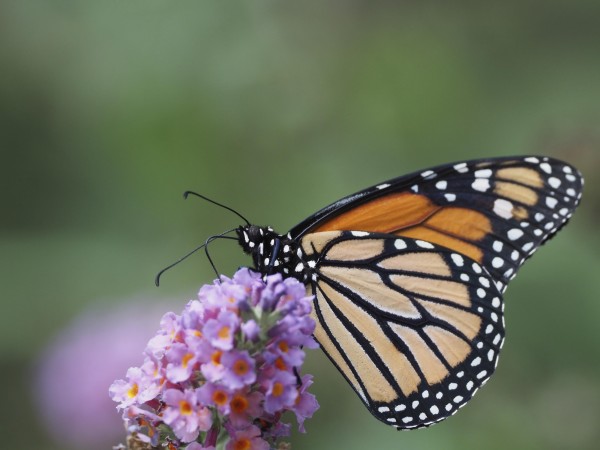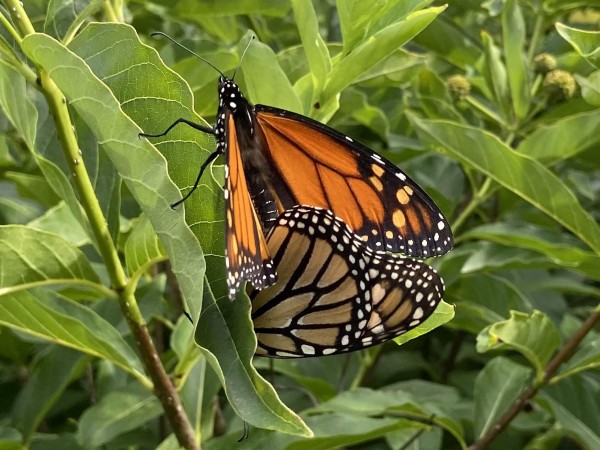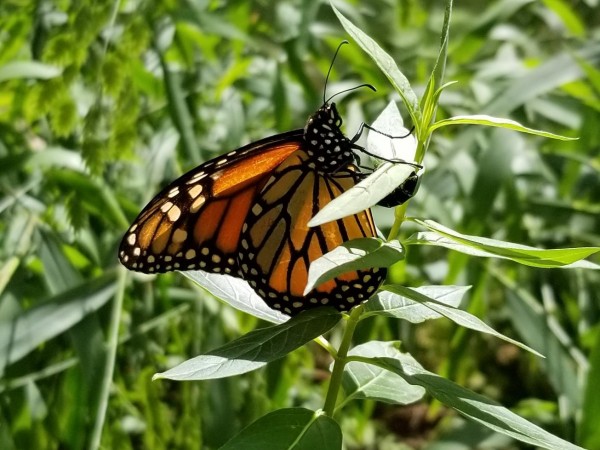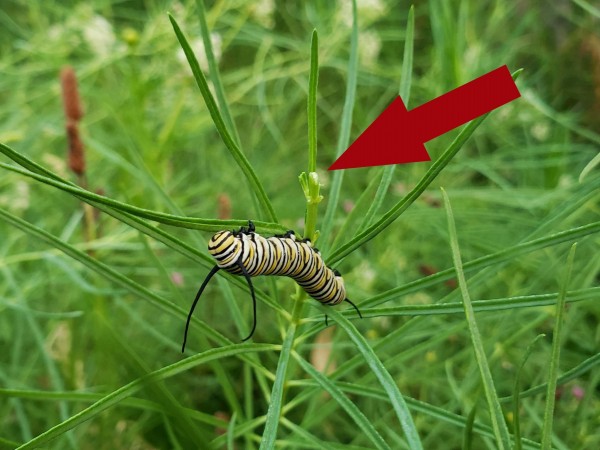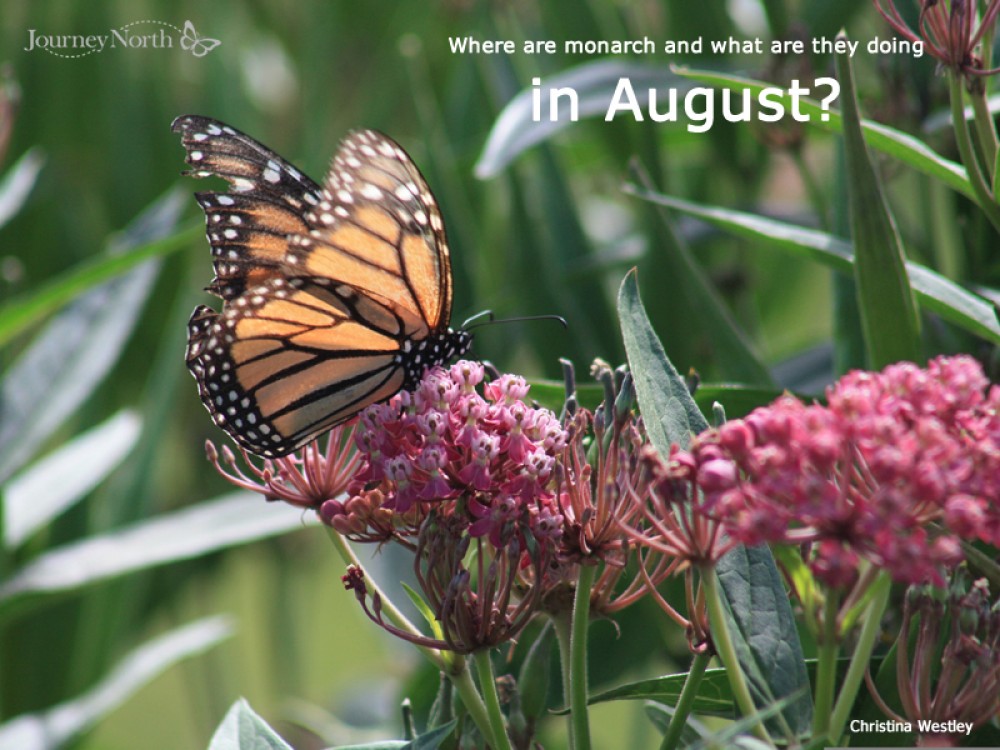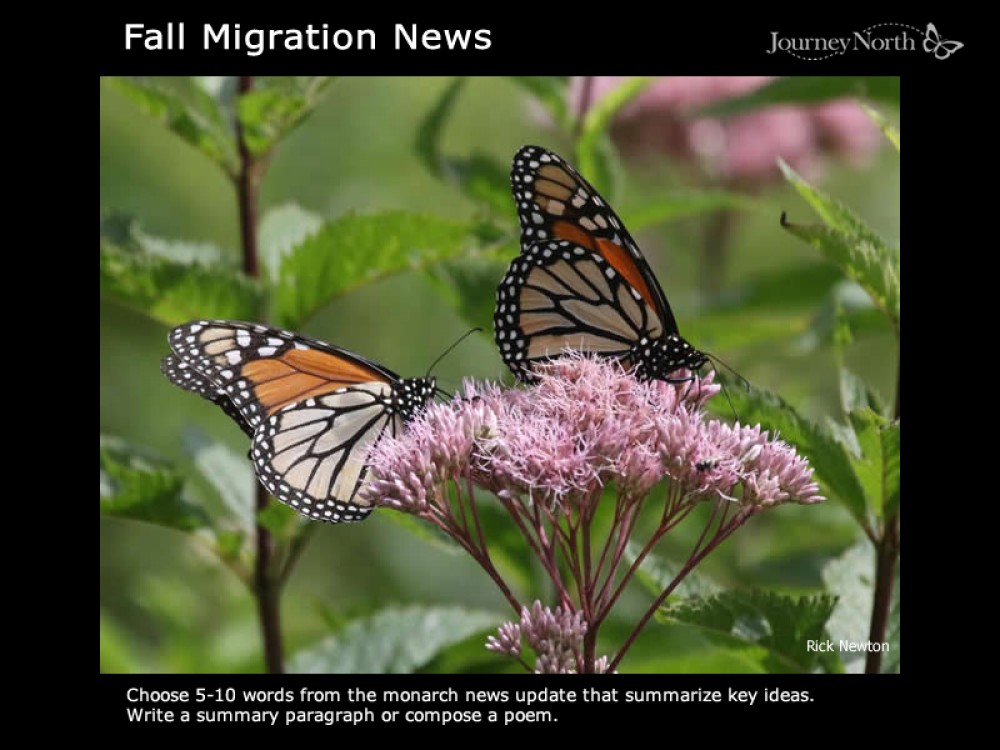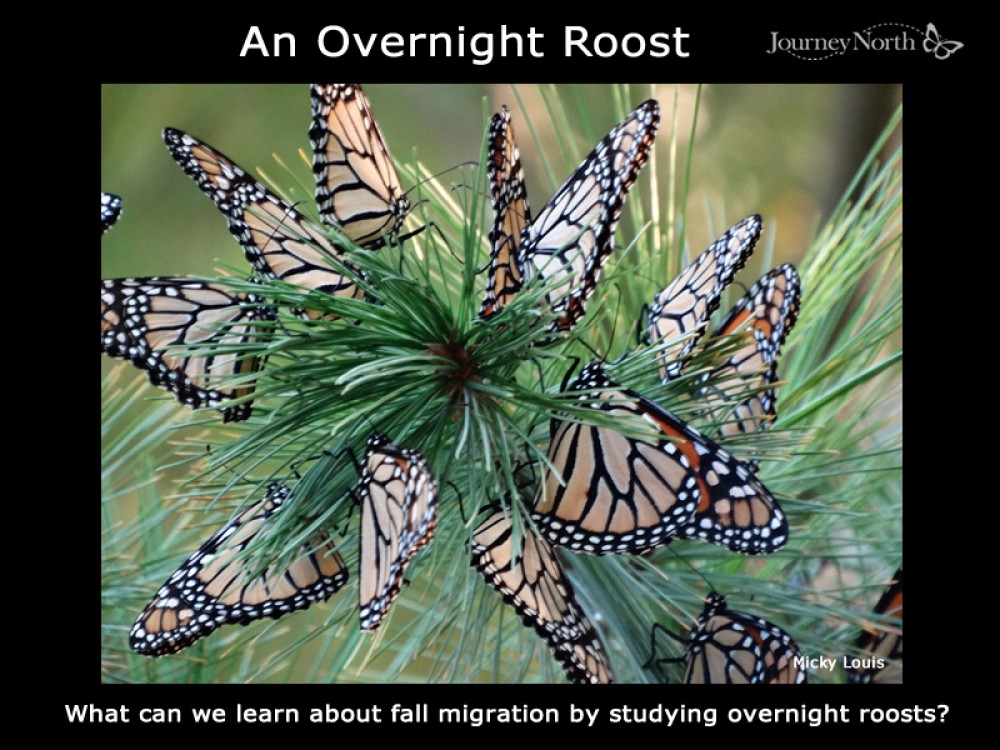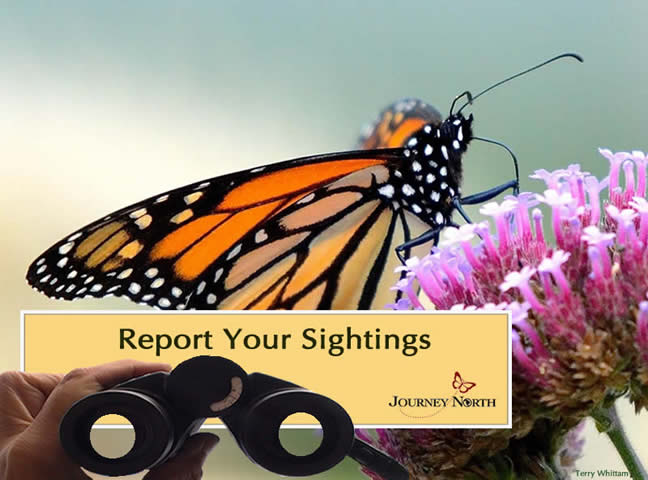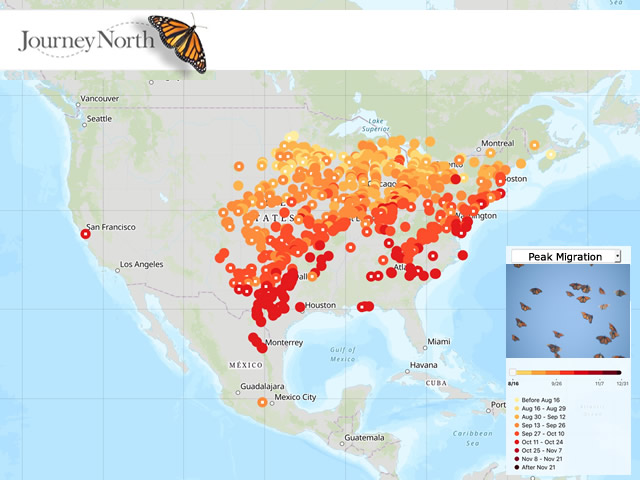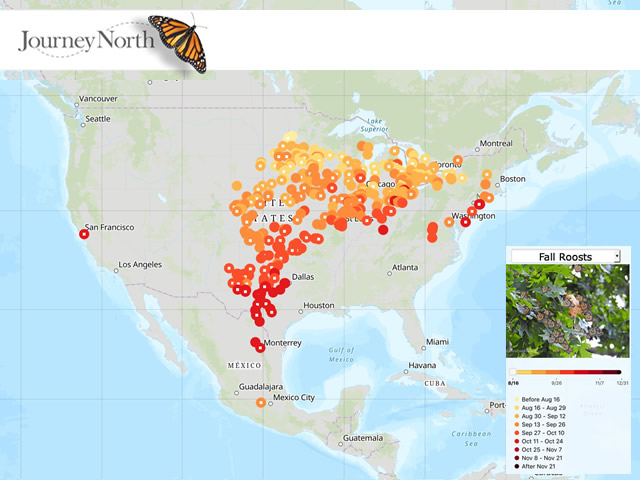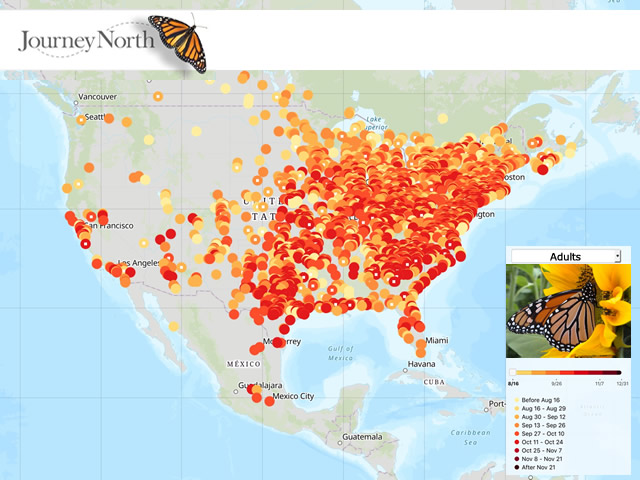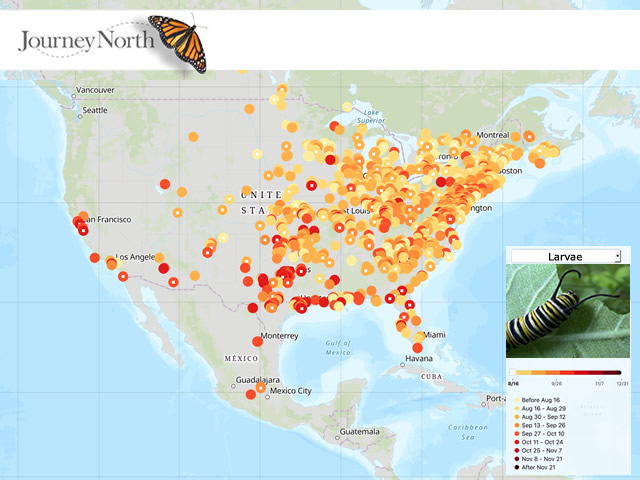Migration Momentum Starting
Momentum Builds
Signs of migration are becoming more evident. Throughout North America, Journey North citizen scientists are reporting monarchs fueling up on nectar in preparation for a long journey south. Reports of overnight fall roosts are picking up as well, primarily in the Upper Midwest of the United States.
Further south, monarch breeding behavior and observations of eggs and larvae continue to come in, although eggs are still being reported as far north as Maine.
Thus far, no observations of directional flight – another sign of fall migration – have been reported. What will change next week? Migration is just beginning!
Sightings on the Ground
Eastern population:
Jaremy in Brownfield, ME: "I checked the Swamp and Butterfly Milkweed in the perennial garden out in the yard and found 8 eggs (6 on Swamp and 2 on Butterfly). The eggs in the perennial garden could be from one of the other 2 monarchs I saw today. Well, that answers my question if monarch females were done laying eggs here in the north and were just getting ready to migrate as it is almost September." (08/21/2020)
Blanca in Goderich, ON: "I counted 20 monarchs nectaring on Noxious Canadian Thistle in an open field. On top of the hill of the Lake Huron shoreline, Goderich, Ontario. Time: 11:00 am. Temp. 20C." (08/19/2020)
Brenda in Perrysburg, OH: "6 roosting for the night with others fluttering around. Warm with calm winds. Migration must be starting!" (08/21/2020)
Frank in Leawood, KS: "One or two monarchs on butterfly bush intermittently all day. All seemed to be females." (08/19/2020)
Laura in Tulsa, OK: "Pair of mating monarchs in the backyard. This is the third mating pair I've seen this week. Continuing to find eggs, larva, and seeing adults flying through the yard!" (08/21/2020)
Carrie in Stone Mountain, GA: "Egg laying monarch in my yard." (08/23/2020)
Western population:
Jeff in La Junta, CO: Jeff spotted a larva feeding on milkweed and, "also saw a number of adult monarchs. Lots of plains, horsetail and broadleaf milkweed." (08/22/2020)
Sharon in Camp Verde, AZ: " [Larva] feeding on Horsetail milkweed." (08/20/2020)
Roost Reporting
Monarchs rest at overnight roosts at the end of each migration day. Take a look at the roost map and notice where roosting has occurred in the fall. Roosts show us where large concentrations of migrating monarchs are found. Week by week, the map will reveal the main migration pathways to Mexico and the pace of migration. Much mystery surrounds roosts as they are difficult to study; they don’t last long and can’t be found dependably in the same places every year.
When submitting roost data to Journey North, please include the following information in your comments:
-
Date the roost first formed
-
Nectar sources nearby like clover, alfalfa fields or wildflowers
-
Overnight temperatures
-
Wind direction. Were the monarchs shielded from the wind in this location?
-
Tree species monarchs were roosting on
-
Photos
- How you counted or estimated the number of adults roosting
Keep Reporting
When you see a monarch, we want to know. Please report your observations of monarch adults, eggs and larvae. Start now — and continue to report until you see your last monarchs of the season. Fall migration is here!
Fall Monarch Migration 2020
Please report all monarchs you see: Adults, Eggs & Larvae, Overnight Roosts, Peak Migration Events


